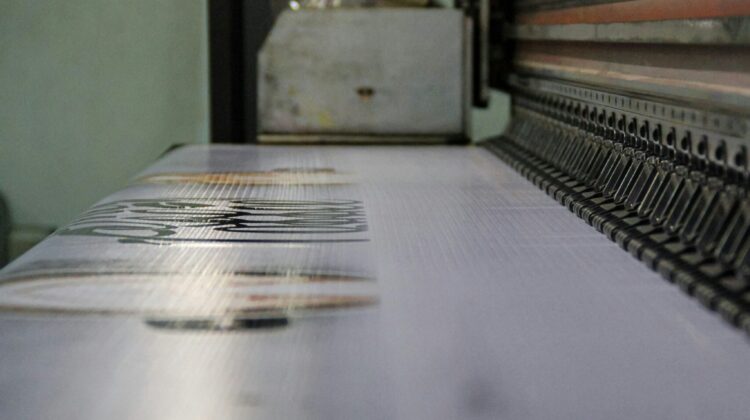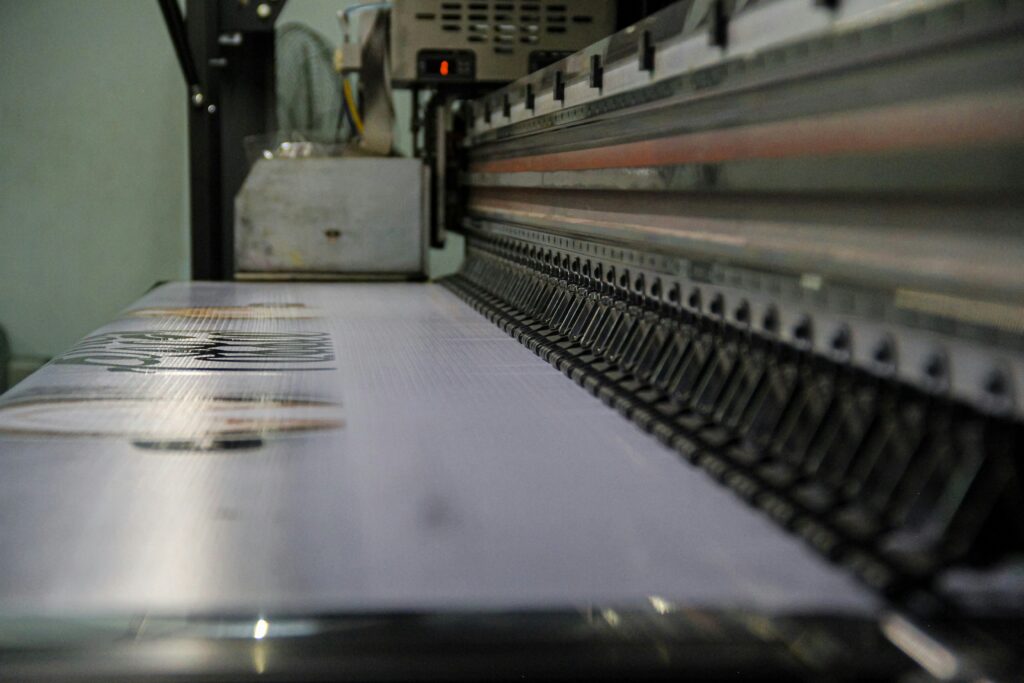
Textile printing is both a creative and technical process that has seen tremendous development in recent years.
Although printing and laser processing may seem similar, each method actually offers unique features and results (you can find our article on additional treatments here).
Depending on the customer’s needs, different technologies allow us to respond effectively to specific requirements for quality and durability.
Digital printing: the versatility of innovation

Digital printing has grown significantly in recent years, thanks to major technological advancements.
This method involves the use of machines that apply ink directly onto the fabric through an inkjet process. One of its main advantages is its ability to withstand washing, ensuring long-lasting prints over time.
A great strength of digital printing is the ability to achieve unique effects, such as stone wash or sanding.
These allow for a lived-in look, making this technique particularly popular for casual or vintage-style clothing.
In addition, it’s possible to print on rolls or, in the case of placed prints, to achieve highly precise and detailed results.
This technique is ideal for productions that require intricate details and high-definition results, making it perfect for creative projects or limited-edition collections.
Pigment printing
Another widely appreciated and commonly used method in the fashion industry is pigment printing.
This technique, which can be done either on rolls of fabric or on single pieces, uses chemical or natural pigments to create rich, long-lasting colors.
Pigment printing requires a metal stencil for each color shade, which can be used to represent any design, logo, or shape the customer wishes to print—offering a high level of product customization.
Although it involves longer preparation times compared to digital printing, pigment printing is particularly suited for high-quality production, especially when the goal is to achieve vibrant and durable color effects.
Moreover, by using natural pigments, it’s possible to produce eco-friendly and sustainable garments—meeting the growing demand for greener fashion solutions.
Transfer printing: the timeless classic of precision
Transfer printing is one of the most well-known and classic techniques for garment customization.
This method involves applying an adhesive film to the fabric using a manual or automated heat press. The transfer film is first printed with the desired design and then applied to the fabric using heat and pressure.
Transfer printing is especially effective for achieving high-definition prints with vivid colors and sharp details. It is widely used for customizing t-shirts, sweatshirts, and other apparel, as well as promotional items like bags and accessories.
This process is quick and relatively simple but delivers high-quality results with good durability.
Printing for unique garments
Textile printing is one of the most dynamic and ever-evolving technologies in the world of fashion and design. Whether it’s digital, pigment, or transfer printing, each method has its strengths and can be chosen based on the specific needs of the customer.
Thanks to technological innovation, it’s now possible to create highly customizable, durable, and vibrant prints—perfect for meeting the increasingly demanding expectations of the market.
If you’re looking for a textile printing solution, don’t hesitate to explore the full potential of the advanced machinery used by Fun Factory Mode, ensuring consistently high-quality results.
With the right choice, you can bring to life unique, high-end pieces ready to stand out in the fashion world.